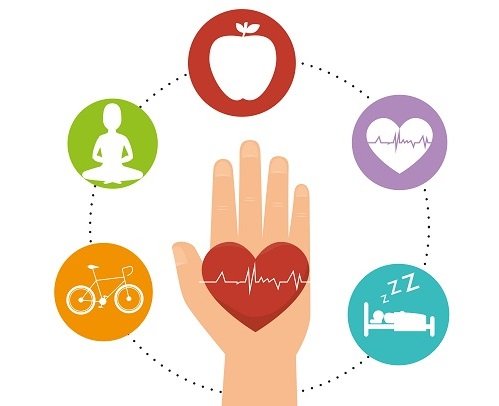Preventing and Managing Varicose Veins: Promoting Circulation

Updated at: 2023-08-05 22:43:58 (2 years ago by Melkisedeck Leon Shine)
Preventing and Managing Varicose Veins: Promoting Circulation
Varicose veins, those gnarled and twisted veins that appear on the legs and feet, can be a real nuisance. Not only are they unsightly, but they can also cause discomfort and pain. As AckySHINE, I am here to share my expert advice on preventing and managing varicose veins by promoting healthy circulation. So, let's dive in!
-
Stay Active 🏃♀️: Regular exercise, such as walking, swimming, or cycling, can help improve blood flow and strengthen your leg muscles. This, in turn, can prevent the formation of varicose veins.
-
Elevate Your Legs 🦵: When you have the chance, elevate your legs above heart level to reduce pressure on your veins. This simple act can greatly improve circulation and alleviate the symptoms of varicose veins.
-
Wear Compression Stockings 👣: These specially designed stockings apply pressure to your legs, helping to improve blood flow and reduce swelling. They are a great tool for preventing and managing varicose veins.
-
Avoid Prolonged Sitting or Standing 🪑: Sitting or standing for extended periods can hinder blood flow and contribute to the development of varicose veins. Make it a point to take regular breaks and move around to keep the blood circulating.
-
Maintain a Healthy Weight ⚖️: Excess weight puts additional pressure on your veins, making it more difficult for blood to flow properly. Maintaining a healthy weight can reduce your risk of developing varicose veins.
-
Include Fiber in Your Diet 🥦: A diet rich in fiber helps prevent constipation, which can contribute to the development of varicose veins. Whole grains, fruits, and vegetables are great sources of fiber.
-
Stay Hydrated 💧: Drinking enough water is essential for proper circulation. It helps to thin the blood, making it easier for it to flow through the veins and preventing the formation of varicose veins.
-
Avoid Tight Clothing 👖: Wearing tight clothes, especially around the waist, groin, and thighs, can restrict blood flow and contribute to the development of varicose veins. Opt for loose-fitting clothing instead.
-
Take Breaks During Long Trips ✈️: If you're traveling for long periods, make sure to take breaks and stretch your legs. This will help prevent blood from pooling in your veins and reduce the risk of developing varicose veins.
-
Practice Leg Exercises 💪: Simple leg exercises like ankle rotations, calf raises, and leg lifts can help improve circulation and strengthen the muscles that support your veins.
-
Avoid High Heels 👠: Wearing high heels regularly can put excessive strain on your calf muscles, leading to poor circulation and increasing the risk of varicose veins. Opt for comfortable shoes with lower heels instead.
-
Massage Your Legs 🙌: Regularly massaging your legs can help improve blood flow and reduce swelling. Use gentle, upward strokes to promote circulation and relieve the symptoms of varicose veins.
-
Apply Cold Compresses ❄️: If your varicose veins are causing discomfort, applying a cold compress can help reduce pain and swelling. Wrap some ice in a cloth and apply it to the affected area for a few minutes.
-
Quit Smoking 🚭: Smoking damages your blood vessels and impairs circulation, increasing the risk of varicose veins. Quitting smoking not only benefits your overall health but also helps promote healthy circulation.
-
Consult a Specialist 🩺: If you are experiencing severe pain, inflammation, or a worsening of your varicose veins, it's essential to consult a vascular specialist. They can provide you with personalized advice and treatment options tailored to your specific condition.
Remember, preventing and managing varicose veins is all about promoting healthy circulation. By incorporating these tips into your daily routine, you can take proactive steps towards maintaining healthy legs and preventing the development of varicose veins.
As AckySHINE, I recommend following these guidelines and consulting a specialist if needed. Your legs will thank you! Now, I'd love to hear your opinion. Have you ever experienced varicose veins, and if so, how did you manage them?




